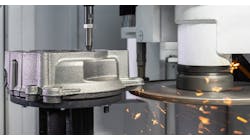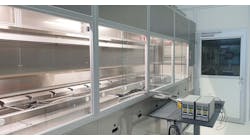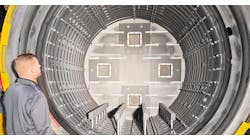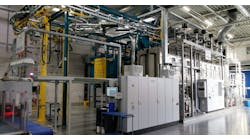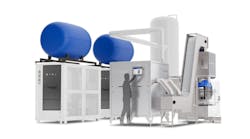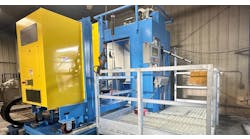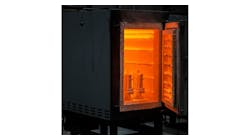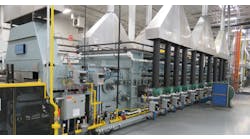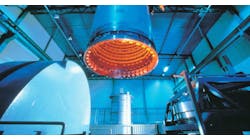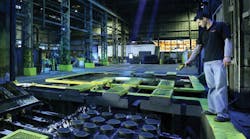Recently, MetalTek International’s Wisconsin Centrifugal Division had its heat-treating processes reaccredited by Nadcap, continuing a record of certification that the foundry has maintained since 1995. It’s an impressive record, and also proof of the long-standing importance of heat-treating capability for foundries seeking to gain and hold a position in supply chains for critical engineered products.
“The planning is critical, but it takes the entire team to maintain it every day” according to Tom Garcia, quality manager at MetalTek Wisconsin Centrifugal. “Processes are more robust now than when we were first certified and our people continue to find ways to make them even better.”
The fact is that heat-treating technology gets more demanding every year, and some recent developments illustrate current trend lines for industrial thermal processes.
Heat treating techniques are central to improving commercial applications for cast products, and to developing new ones. As such, heat-treating represents a base of activity in industrial research programs.
The Metal Processing Institute at Worcester Polytechnic Institute is one of four academic centers for the American Lightweight and Modern Materials Manufacturing Innovation Institute (LM3I), a $148-million federal initiative announced in February and aiming to improve the U.S manufacturing capabilities and competitiveness from the ground level.
MPI is among North America’s largest industry-university consortiums, with over 80 industry members. It will contribute expertise in lightweight metalcasting and heat treatment from two of its industry-funded research centers: the Advanced Casting Research Center (ACRC) and the Center for Heat Treating Excellence (CHTE).
Also at WPI, a two-year, $2.1-million award (part of a larger award by the U.S. Army) will support the development of new metallurgical methods and new lightweight alloys for defense systems and vehicles. Technologies and processes developed as part of the research will have applications in the aircraft, automotive, and electronics industries, too.
Bigger News in Commercial Operations
Heat-treating is also progressing on the commercial front, as the independent shops take efforts to improve their availability to the range of process demands that metalcasters (and others) make in behalf of their own customers.
Last year Complete Heat Treating LLC in Milwaukee completed its consolidation of the former Wisconsin Steel Industries Inc., making it a more a formidable presence in Midwest’s commercial heat-treating market. The acquisition had been completed earlier, followed by relocating equipment and personnel to a 65,000-ft2 site. The highlight of that revamped operation is a gas-fired car bottom furnace with a 53x22x14-ft workspace, powered by 40 million BTUs, with a 50,000-ton capacity and operating temperatures to 2,150ºF max.
In all, the Milwaukee operation includes five car-bottom furnaces, five box furnaces, heavy-duty polymer and water quench tanks, and capabilities for stress relieving, sand blasting, prime and finish painting, annealing, normalizing, BHN inspection, straightening, and saw cutting of test specimens — all in full compliance with ISO 9001 certification standards. Workpieces to 50 tons are routinely processed, using the existing and new cranes installed there.
Complete Heat Treating’s customers include manufacturers of components for agricultural and mining equipment, material-handling equipment, rail systems, construction equipment, power generation, oil-and-gas, and other types of manufacturing equipment.
This underscores the third important trend in heat-treating: oversized parts are not so out of the ordinary any longer. Developments in renewable energy, mining and quarrying, oil exploration, marine and other applications have led to significant increases in the size of power transmission components — like gears, shafts, pinions and bearings, to handle greater productivity demands. As these components are exposed to severe duty cycles, there is renewed emphasis on the heat-treating methods needed to enhance their wear resistance and strength properties.
Anticipating growing customer demand for processing larger components, Keighley Laboratories, a commercial heat treater in England — recently expanded the holding capacity of one of its largest pit furnaces. By increasing the chamber’s dimensions to 1,110-mm working diameter and almost 1,800-mm maximum length, it gained over 30% in overall heat-treating capacity. It also increased the carrying capacity for the overhead crane that serves all seven pit furnaces there, as well as a salt bath and tempering equipment. The crane now has a maximum lift of 3.0-metric tons.
Enlarging the No. 1 pit furnace involved custom-fabricating an inner shell (or retort) made from duplex stainless steel, but this investment has already been offset by some significant new orders: Keighley was contracted to heat treat 1,108-mm diameter gear wheels for an offshore project; and a 1,755-mm long, 1-mt shafts for a renewable energy project.
The company already has started to study upgrading other pit furnaces there, and its programmable process controllers, too.
“This has opened up a new market for us amongst engineering companies and OEMs, who are looking to heat treat larger components,” stated Michael Emmott, the commercial director. “This involves physical issues regarding accommodating the size of these parts, then lifting them out of the furnace and into the quench tank, as well as demanding special skills for treating very large workpieces without damage or distortion.”
